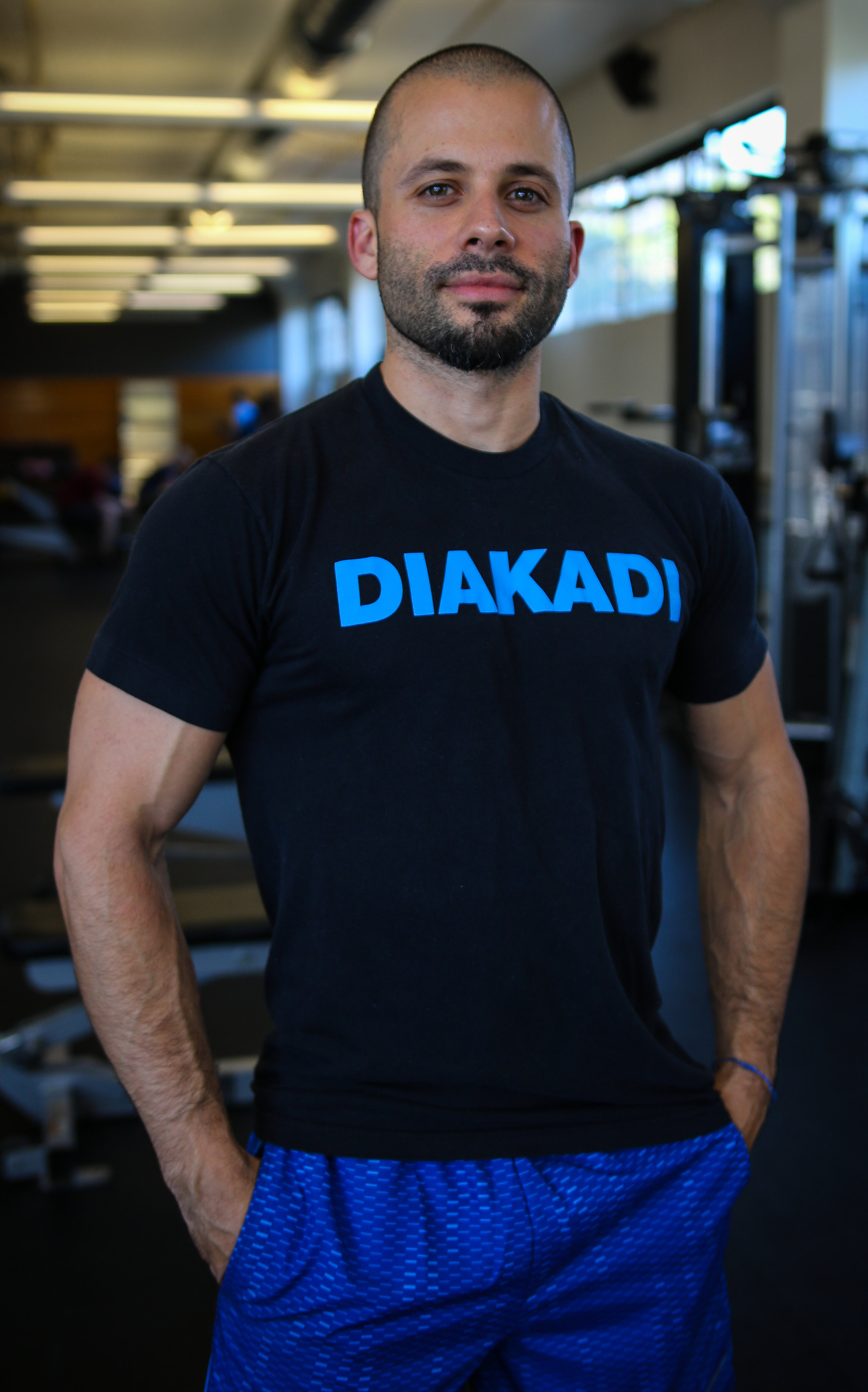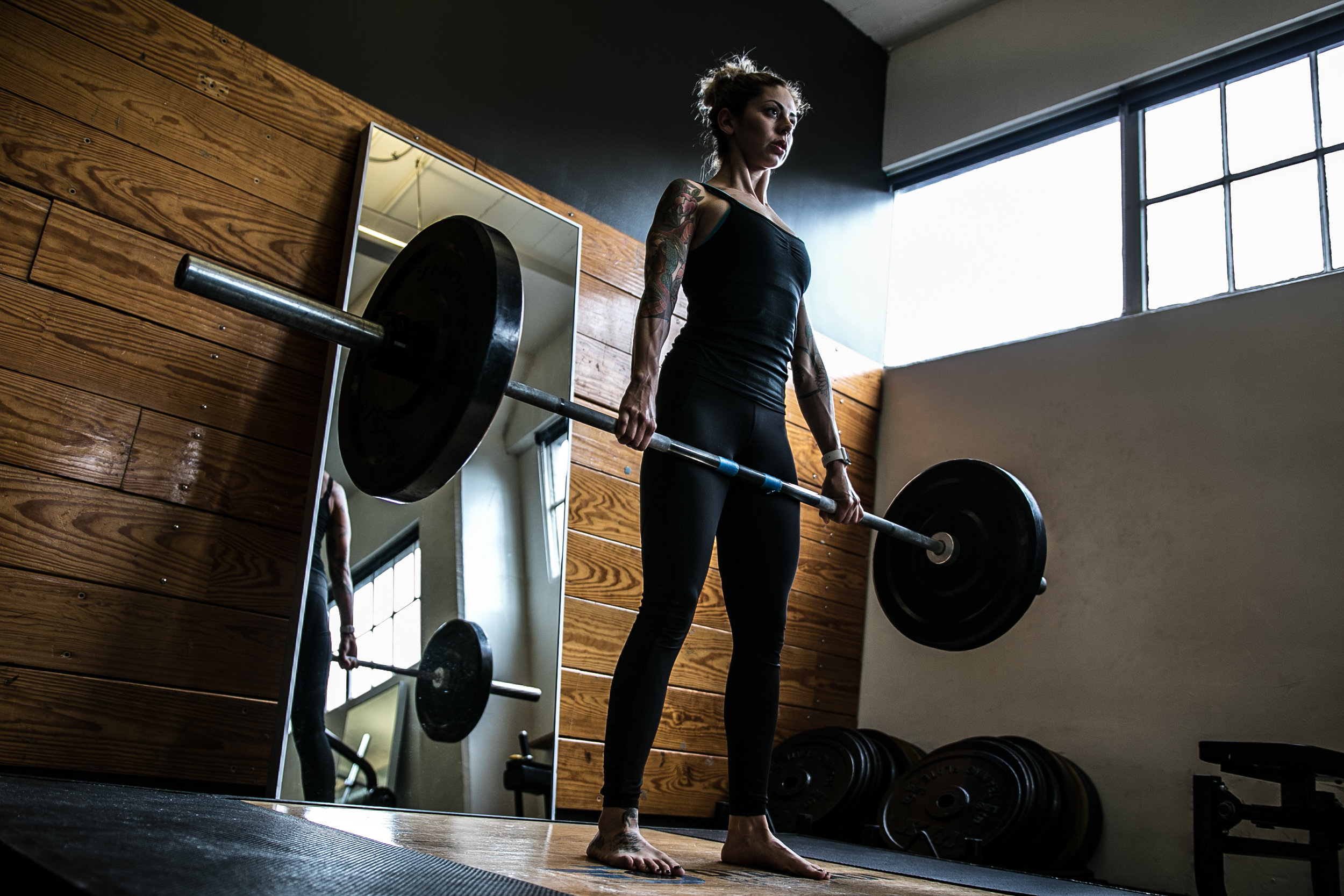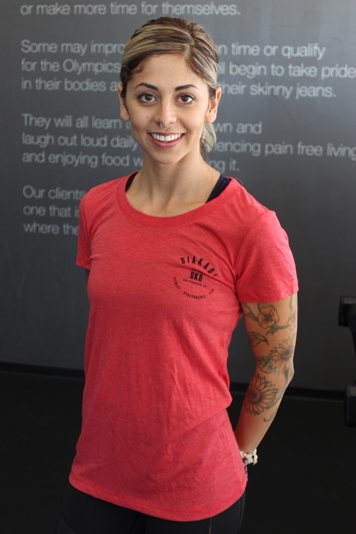In this article, we examine the variable combinations that you can use to increase muscle hypertrophy (size), increase power as a function of force production and velocity (distance over time), and increase maximal strength or the maximum amount of weight you can lift in a single repetition.
As in DIAKADI’s post on foot position for the squat, we have gathered a critical mass of research-based recommendations on weight training variables from the leading certification authorities: ACSM, NSCA, and NASM. In addition, we’ve polled the informed opinions of in-house DIAKADI specialists as well as specialists in the fitness community (as described in their published works) regarding each training goal.
What do you want to get out of your workouts? Let’s think about what you’re putting in.
Hypertrophy:
As mentioned above, training for hypertrophy is training to maximize muscle size. Think well-oiled, vein-popping, posing for the cameras, muscles. This training is not the best way to maximize your strength, although those training this way do get stronger. It’s also not the best way to get more powerful. This goal is typically for aspiring body builders, who want to produce muscles that are as large as possible (or indivdiuals who want to look good at the beach). In the past, this was the most common way to train because it was the training typically recommended by muscle magazines. ( Dear Millennials: Magazines, those things in the check-out aisle with Brangelina on the cover, were the primary way most people got information about weight training until about 10 years ago, when Google exponentially broadened all of our horizons.)
DIAKADI trainer Chris Dovale shared his expertise on training for hypertrophy, coupled with training for strength:
If one wants to add strength and size, what is the best route? Train like a Powerlifter to gain strength, or train like a Bodybuilder to gain size? In my experience, the best way to add strength and size is to train like a Powerlifter and a Bodybuilder, using a hybrid approach that blends both methodologies, termed "Powerbuilding".
This approach requires training heavy in the beginning of your workout on your main compound movement for the day (squat, bench, deadlift, overhead press). After that, do volume training on your accessory lifts that complement the main lift.
After synthesizing the information from the certification authorities, including hypertrophy specialist and celebrated author Dr. Brad Schoenfeld, we found the combination of variables that most of our experts suggest will best achieve the goal of muscle hypertrophy is: 3 to 5 sets of 8 to 12 reps, at an intensity of 75 to 85 percent of your one rep max (1RM) performed with roughly a 2/0/2/0 tempo and 30 to 90 seconds rest between sets. This should be done at least two times per week for each muscle group. The key elements in hypertrophy is volume. It’s unsurprising, then, that body builders spend a ton of time in their gyms. Check out Table 1 below for the full details from your favorite experts.
So, if you train with the recommended variables will you look like a bodybuilder? Not necessarily. In addition to carefully training their muscles, body builders need to strictly control their diets among other factors. Most ladies do not have to worry about getting too big from working out in this range: women have significantly lower testosterone levels than men and hormones are another factor in an individual’s propensity for bulk. For those of you women who are still worried that your muscles will get big rather than “toned,” check out blogs by Nia Shanks and Molly Gollbraith, among others.
Power:
Training for power is about maximizing the ability to use strength quickly. This is the ideal training for the athlete who wants to be able to apply his or her strength in an extremely efficient manner. Think football players firing out at the snap of the ball, baseball players at bat, sprinters—really any athlete that has to use their strength in an explosive manner. High-level athletes tend to participate in Olympic-style weight training, since this form of weight training requires participants to move heavy weights in a ballistic (very quick) yet a controlled fashion. (Note: A clean foundation of proper form at slow to moderate speeds must be achieved before advancing to higher speeds.)
DIAKADI trainer, Ross Steiner, had this to say about training for power:
Think Olympic style lifting: Snatch, Cleans, Jerks and their derivatives. For my athletes, we love working a variety of cleans into our program. Some training cycles we will utilize hang cleans, power cleans and full squat cleans. No matter what lift we choose we approach each set and each rep with intent. Rip the weight as fast and explosively as possible!
After analyzing the information we gathered for Table 2, we find that the experts agree (on average) that an excellent way to train for power is to complete 3 to 5 sets of 1 to 3 reps, at an intensity of 80 to 85 percent of 1 RM performed as quickly as possible with 2 to 4 minutes of rest between sets. Each muscle group should be worked out in this fashion roughly 2 to 4 times per week depending on the individual and his or her exercise tolerance. Note that recommended training variables can vary quite heavily with this style of training: the NASM recommends supersetting a strength exercise with a speed exercise, while Greg Everett, the author of Olympic Weightlifting: A Complete Guide for Athletes & Coaches and the owner of Catalyst Athletics in Sunnyvale, CA, generally recommend training with the Olympic lifts to train for power. The key element, across the board, is tempo; when your goal is explosive strength, it’s indispensable to train explosively. Check out Table 2 below for the full details from your favorite experts.
For those interested in learning how to do Olympic-style weight training, we recommend that you first seek an experienced and qualified coach to teach you these lifts. Here at DIAKADI, you can talk with Allan Mateo or Ross Steiner. It is essential that athletes use optimal form and clean technique when training for power.
Maximal Strength:
Maximal strength is the maximum amount of weight one can lift in a single repetition. Eric Cressey, the author of Maximum Strength and renowned trainer of countless professional sports athletes, compares this to the kind of strength you need on moving day–can you lift the couch to get it into the moving van, or do you have to pay somebody to come do it for you? Typically power lifters or participants in strong-man competitions lift to maximize strength; however, both body builders and athletes will lift for maximal strength on occasion. Why? Body builders will try to develop maximal strength because it increases their strength base, which allows them to lift heavier weights during their hypertrophy workouts, stimulating more muscle fibers and helping their muscles grow bigger. Athletes will sometimes lift for maximal strength to increase their force production and therefore increase their power output—remember Power = Force times Distance over Time, so increased force production yields a higher power output when the amount of time and distance remain the same.
When asked about training for maximal strength, DIAKADI trainer Nicolette Amarillas said:
When training a client for maximal strength, I believe that the time under tension is the most important piece. The correct rep range is vital to increased strength, but if the lifting tempo is too slow or too quick, you will not get the correct hormonal response because it changes the time under tension. Time under tension for increased strength should never exceed 20s. So, if an athlete is performing 5 reps, each rep should not take more than 4s to complete. If it does, they are no longer working in the correct time under tension for the correct hormonal response.
Table 3 below shows what the certification authorities and Eric Cressey recommend to achieve maximal strength. When analyzing the data, we found that the recommended combination of variables to train for maximal strength were 2 to 6 sets of 1 to 5 repetitions, using an intensity of 85 to 100 percent of 1 RM performed as quickly as possible in the concentric phase—which won’t be very fast considering the high intensity—and controlled in the eccentric phase. Lifters should rest roughly 2 to 5 minutes between sets, and generally workouts should be performed 2 to 4 times per week. The key element here is—no surprise—maximizing the amount of weight lifted, even if you can only lift one or two reps. Check out Table 3 below for the full details from your favorite experts.
Overall, remember that your muscles will eventually adapt to any training routine if you don’t change things up from time to time. You may zero in on the ideal combination of exercise variables for your goal -- whether it’s power, hypertrophy, maximal strength or otherwise -- but if you don’t keep things interesting, don’t be surprised if you hit a plateau. We love the strategy Dr. Brad Shoenfeld suggests: “Cycle periods of low-rep training and high-rep training into your overall program, while progressively trying to increase your strength and perfect your exercise form every time you lift.”
A note for you readers who are focused on body fat loss and toning: Body fat loss has more to do with caloric surpluses and deficits and can be achieved by most any well-crafted training program paired with nutrition. On the other hand, “toning” is a vague, subjective term that is difficult to measure and near impossible to research, but it does help sell magazines.
Happy Lifting!
Scott Bissey & Billy Polson










